Taking A Walk Through My Hometown During A Pandemic
Most towns are uncharacteristically dead right now, but my hometown was business as usual.

On a sunny, bird-song morning, I decided to take a walk. I’ve always enjoyed walking, and on the ever-sprawling streets of Manhattan it’s easy. There’s no getting lost when you’re wandering a grid. The same cannot be said about my hometown.
Tioga, Louisiana doesn’t even qualify as a “town”, technically. According to Wikipedia, it’s a “village” Definitely not the kind that you’d want to raise a child, though. In this midst of this pandemic, things should have been different. I thought they would be before I set out. Low and beyond, though, everything moved at the exact same pace. Tioga started dying long before this virus arrived.
I knew my route without question, which isn’t exactly impressive. Tioga is one long stretch of highway—long being a massive overstatement. Really, it’s about three miles across, with little veins of neighborhoods branching from both sides. I stayed to the side of the highway, setting my halfway point at the nearest grocery store. One mile of walking on the edges of overgrown yards. Turn around. Same road, but backwards.
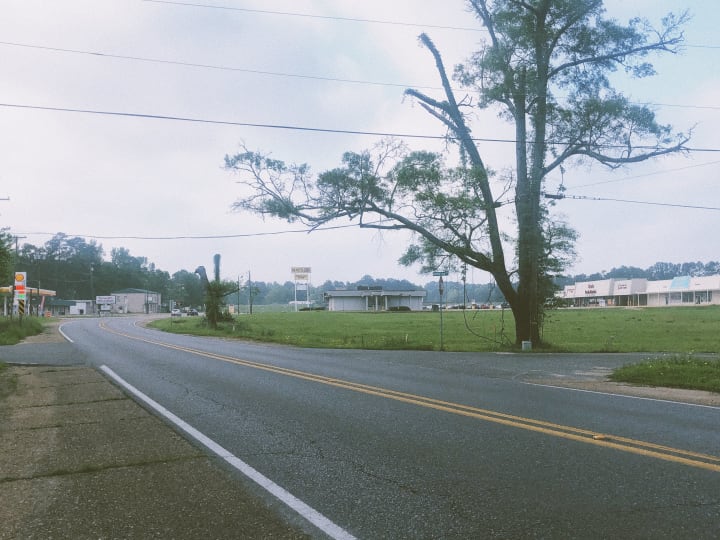
Despite the squat buildings and fields that stretched across the earth, I didn’t feel free. Nothing about the scenery—towering trees morphing into patches of thick, dark woods—was a “breath of fresh air”. I’d walked down the side of that highway more times in my life that I would ever want to count. But this time it filled me with dread.
Not everything was the same from when I was a kid. It seemed as though the whole town had gone out of business. Empty, soulless buildings watched me as I passed by. Stores, gas stations, auto shops. Houses covered in green, as if they’d been reclaimed by nature from the meth-addicted ghouls that seemingly evaporated from its insides.
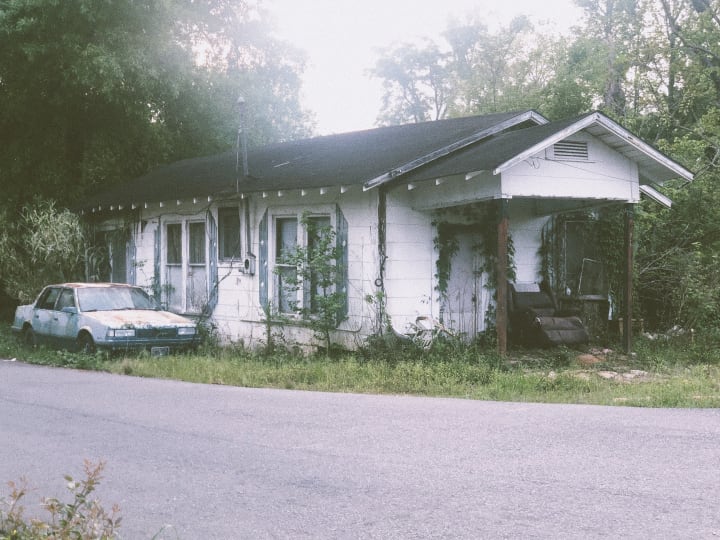
But just as many cars glided down that highway as before. Which was to say, not much. People headed to their essential jobs at the grocery store or the local bar, I suppose. At one point during my walk, a friend from high school stopped his car to say hello.
“Do you need a ride?”
I’d almost forgotten that people here didn’t just walk. You traveled. One was either driving somewhere or needed a ride somewhere. Always one place to the next.
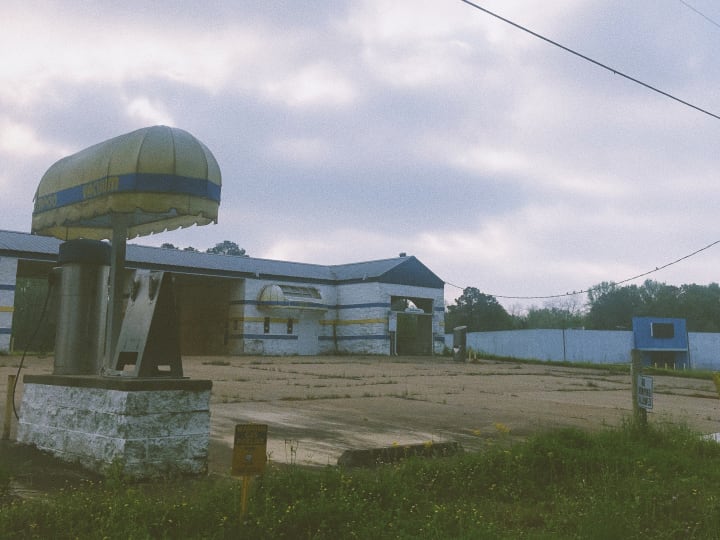
So many things are still the same, though. Some are so completely unchanged that it felt as though I’d fallen back into 2009. The sno cone stand, for example, was perfectly well kept. I’d stood outside of it for years with my parents, or siblings, or friends from high school. If this were a normal March morning, I’m just it would have been open as I passed it.
The thing about Tioga is that it has always been slow to change. Full of old religions people, their middle-aged kids who settled down too fast, and their rebellious grandchildren just itching to escape. Oh, and a whole lot of white trash in between.
Going forward, I made a note of a road that led to a heap of uncomfortable memories. It hung over me as I passed, calling me to visit. On my way back, I succumbed to its beckoning and ventured closer to it; just close enough to get a picture.

To most people, this is just a church. A building made of brick and wood and plenty of plaster. But to me, it was a box. Sealed tight with thousands of bad, or at the very least uncomfortable, memories. Sunday school teachers giggling as I left the room. The smell of the bathroom I used to hide in. Lisol, wet paper towels, and piss. The sound of my pastor (the thought of whom makes me stomach churn) patronizing me through the halls. “Zoey Danielle!” He’d call after me, in his Southern twang. I won’t go into why I don’t like this man, why I hid, why teachers laughed at me.
All I will say is that this building was a place of pain to me. It filled me with the truest shame. And standing in that street, staring at it from a distance, I couldn’t help but imagine it getting sucked into the earth, crumbling under the weight of all that shame, until nothing remained. It was a nice thought.
But, overall, my walk was uneventful. You might expect that from a two-mile stroll through a town so small it doesn’t technically exist. But my eye was changed by a few different scenes. The most haunting to me was a coop of pigeons outside of a local flea market. On the front of it, a big sign reading “PIGEONS FOR SALE” and “$10 AND UP”. How inexplicably “small town” is the sale of birds that you could get for free in a parking lot?
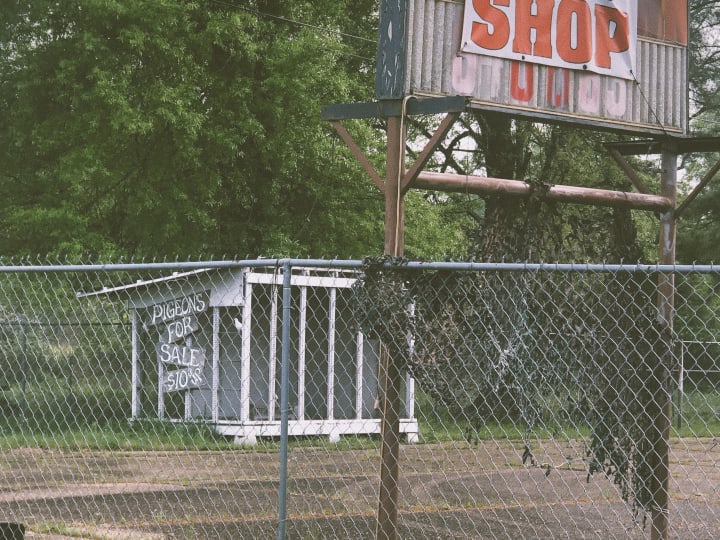
It was kind of funny, yes. But it was also disturbing. These pigeons were locked in a cage outside. They had no room to fly or explore. It was as if their wings had been cut clean off. No one was there to entertain or nurture them. They were alone. Bored. Stuck.
That’s how it felt to be in my hometown, though. It trapped people and drained the life out of everyone until everything was dead. That’s exactly why I left in the first place. Nothing really lives in Tioga, Louisiana.
I decided to take a different route next time.
About the Creator
Zoey Hickman
Freelance writer with big depression and little skills other than talking too much.
You can find some of my works in Adolescent, Daily Dead, Lithium Magazine, All Ages Of Geek, and Screen Queens.





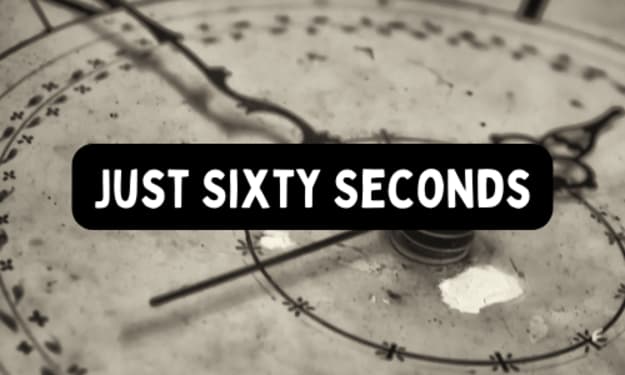
Comments
There are no comments for this story
Be the first to respond and start the conversation.